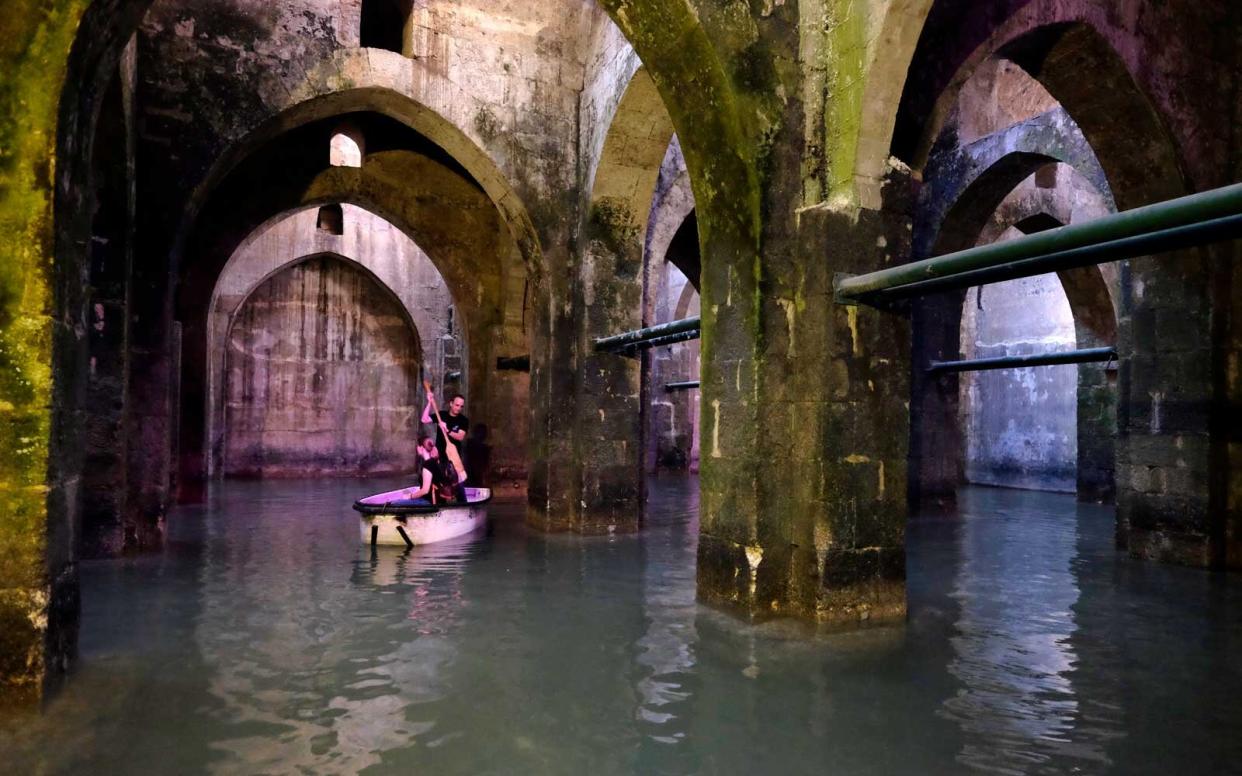You Can Row Your Way Through an Underground Reservoir Like You're in 'Phantom of the Opera'

Eddie Gerald/Getty Images
It is possible to reenact your fantasies from "Phantom of the Opera" and row a boat through a spooky underground reservoir. But this tunnel's a few thousand miles away from Paris in Israel.
The "Pool of Arches" in Ramla, Israel dates back to the eighth century, when the reservoir was built to sustain water supply to the newly-founded city of Ramla. Despite extensive damage to other parts of Ramla in the past 1,200 years due to earthquakes, the reservoir still stands — and is still welcoming visitors.
If you care to paddle your way through the arches, you must descend down a staircase and board one of the rowboats in the pool. It will take about 20 minutes to work your way along the underground arches.
The pool is about 65 feet by 65 feet and contains fifteen columns to paddle around. As you row beneath the vaulted ceilings, be sure to look for an inscription from the reservoir's construction (back in 789 A.D.) and square hatches carved where people used to lower their buckets to collect water.
While some prefer to call the reservoir by its elegant name "Pool of Arches," it's also goes by the name "Pool of Goats" in Arabic because of the animals that used to drink from the cistern.
Although the pool dates back over 1,000 years, it was only recently discovered and excavated by the Israel Antiquities Authorities.
Related: A Culinary Renaissance in the Israeli Countryside
Today, the reservoir is open for visitors six days a week (every day besides Saturday), and costs about $3 (12 NIS) for a tour.
Be sure to visit the exhibit at the end of the attraction that details the reservoir's history, from construction through the reign of the Ottoman Empire to today.

